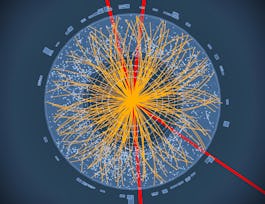This course will help you learn how fossils give us an insight into how the early members of our lineage walked bipedally. The four million years old bone of Australopithecus anamensis is the oldest undisputed evidence for bipedalism in our lineage. Similarly, Lucy’s, who was Australopithecus afarensis, fossil also helped scientists discover a lot about how bipedalism evolved over time. You will also explore bipedal variations in humans. From its earliest version to its modern form—how humans learned to walk, is an interesting story. Similarly how a human being learns to walk, from a toddler’s first footstep to an adult human being’s walk and its variations would also be discussed in this course. You will also understand that while bipedalism has its advantages, it has its adverse effects on humans too from a musculoskeletal point of view.



Experiments and Variations in Bipedalism
This course is part of Bipedalism: The Science of Upright Walking Specialization

Instructor: Jeremy DeSilva
Sponsored by IEM UEM Group
Details to know

Add to your LinkedIn profile
7 assignments
See how employees at top companies are mastering in-demand skills

Build your subject-matter expertise
- Learn new concepts from industry experts
- Gain a foundational understanding of a subject or tool
- Develop job-relevant skills with hands-on projects
- Earn a shareable career certificate


Earn a career certificate
Add this credential to your LinkedIn profile, resume, or CV
Share it on social media and in your performance review

There are 4 modules in this course
This module explores bipedal variations in humans and why different forms of bipedal walking may have evolved.
What's included
13 videos16 readings1 assignment2 discussion prompts25 plugins
This module explores the benefits of bipedal locomotion. It also discusses how the early hominin species such as Homo erectus and Homo naledi used to walk.
What's included
6 videos5 readings1 assignment2 discussion prompts12 plugins
This module provides an introduction to how children learn to walk and how that varies across cultures. This also talks about the difference between running and walking and the adaptations for running.
What's included
11 videos3 readings3 assignments2 discussion prompts3 plugins
This module explores the downsides of bipedalism and the anatomical trade-offs that result from our evolutionary history of upright walking.
What's included
11 videos7 readings2 assignments2 discussion prompts16 plugins
Instructor

Offered by
Why people choose Coursera for their career




Recommended if you're interested in Health

University of Geneva

Universidad de los Andes

Rice University

American Museum of Natural History

Open new doors with Coursera Plus
Unlimited access to 10,000+ world-class courses, hands-on projects, and job-ready certificate programs - all included in your subscription
Advance your career with an online degree
Earn a degree from world-class universities - 100% online
Join over 3,400 global companies that choose Coursera for Business
Upskill your employees to excel in the digital economy


